Today is cold and gloomy. And despite all odds, I feel elated, "a little warm in my heart when I think of winter". The meteorologists have predicted the first snow around the area I live in. Although I know I probably won't see any, as I'd have to drive quite a bit to escape the smog that prevents snow to fall, just the thought of the silent, white blanket craddling our hopes and yearnings is enough to make me dream.
Winter has always been a favourite time for me for reasons beyond logic. It's an instinctive preference, formed at a very early age. As my mother, firm in her belief that children should brace the cold so as to become sturdy (and I did), took me for a stroll as a toddler in bitter cold along the pier, seeing the angry stormy petrol-green sea splash furiously, the wind on my flushed little face, steel skies towering over me, my hands in woolen mittens, candied apples consumed, I felt happy and strangely at home. That was who I am. The joy of returning to a warm house augmented the pleasure already experienced, to be greeted by an adoring father.
Although I am not the person who becomes overjoyed in Christmas for reasons already discussed (much more prefer the Orthodox Easter which is a vastly more mystical and sensual -tied to pagan- celebration in my mind) , winter never fails to make me feel like I was when my feet couldn't touch the ground when I sat on the very armchair I am now sitting cuddling with a good book.
And so perfume should follow. Hence a little list of things that bring to my mind all the joys of winter, of love, of "white horses gone ahead".
Quotes and the title come from the lyrics of the trully great, moving song "Winter" by Tori Amos which you can listen to by clicking on the window above (courtesy of Rasberryswirl on Youtube). You can read the lyrics here
Un Bois Vanille by Serge Lutens
Who else but Serge and Shledrake could come up with a vanilla that is comforting, rich, smooth, deeply woody and never tacky? Vanilla is such an ubiquitous smell, really, which makes it hard to do properly. This is grown up, but with a wink to our childish aspirations.
L by Lolita Lempicka
I had bought a bottle in summer and reviewed it , when it first launched here, but didn't open it for months, relying on samples. Now is the proper time to take the plunge and crack my beautiful bottle open. To me, this is the perfect dark vanilla, with the inclusion of immortelle that adds a salty kiss on warmed skin. Created by Maurice Roucel, responsible for Poison, Musc Ravageur, Farenheit, L'instant and Insolence .
Must by Cartier
Best in pure parfum, Must smoulders and entices, unfolding siren notes of civet and amber anchoring narcissus and mandarin. The unexpected green note of the start has a loose-mouthed effect on the rest of the formula. It highlights it, the way the best conversationalists inspire interest by an unwonted beginning.
Fifi by Fifi Chachnil
From a french lingerie company, this is lacy knickers in dusty antique rose to wear between fluffy blankets, your hair in loose curls. Sweet blond tobacco and citrus notes clash and couple adoringly, a little soapy element with a swoosh of powder, much like Boudoir by Vivien Westwood is constructed, with copious references to the milkiness of Luten's Fumerie Turque. It has a complex character, lighter than Anne Pliska, that was surprising to me and it is definitely complimended by cold weather, as it smells nothing like it should in the heat (hence my delayed appreciation for it).
Thankfully that's one perfume that smells actually better in eau de parfum than parfum/extrait. So, it's also economical!
Muschio e Ambra by L'erbolario
This little italian company makes great products of skincare and perfume and has the most nostalgic labels imaginable; they all seem like they have come out of a paintings index. Muschio e ambra tranlsates as musk and amber and has the delightful smell of aged patchouli and slightly bitter fir resin that stays on your skin for hours on end in the eau de parfum.
24 Faubourg by Hermès
Because after all the orientals one associates with winter, one would want a rich floral to lift the spirits and immerse oneself in their delicacy. This is like the queen of elegance and it veers on floriental. Rich orange blossom on a smooth amber base, sweet but not sacharine. Imagine yourself draped in thick silk and powdered to perfection, your lips painted in a becoming auburn shade to compliment the dark colouring of the juice. Another Maurice Roucel creation. This is the very elegant, classy projection of a lady. Go for the eau de parfum in winter.
Gucci EDP I by Gucci
A nostalgia for great perfumes of the past makes for this thyme, cumin, orange blossom and heliotrope-laced composition that is anchored by vanilla and orris. It smells the way grand dames smelled, but has some air of modernity in there as well, making it a very urban offering for a lady with a hidden side. It proved not to be a big seller for the house, which could be good news (you'll be more unique wearing it) or bad (it will at some point get discontinued), depending on your outlook in life; as with everything else.
Schizm by Ayala Moriel Perfumes
You have probably guessed by now that Ayala's natural perfumes have made an impression on me. Besides her very wintery Fκte d'Hiver her more complex, chypré Schizm is exactly what its name alludes to; the duality of woman: it starts peppery and sharp to segue onto floral notes of which the narcottic tuberose prevails, all bedded down in a country road near a forest, leaves trampled underfoot a campfire smelled at the distance. The official notes are: Black pepper, Cedarwood, Mandarin, Tuberose, Orange Blossom, Jasmine, Oakmoss, Musk notes, Incense
Angel by Thierry Mugler
I am talking about the body cream and not the eau de parfum here. Big vats of nasty chemicals are what many people perceive and yes, I can see why. I am doubtful it contains even one natural ingredient in there. And I know, most of you have either a love-it or hate-it relationship with it, because of its mothballs rolled in toxic caspirene-coumarin aroma of choco-caramel and patchouli. Just try a smidgeon of the body cream. It's all one needs...
Douce Amère by Serge Lutens
Bittersweet, more bitter at first, less so after a while, weird like glue, it transports the soul. A mix of cool and warm, it interpolates various moods, that crystallise in one absinthe-liquor prepared the original way, with vanillic sugar on the spoon and everything.
If one is melancholic but not really sad, this compliments the mood admirably in the colder season.
Pink Sugar by Aquolina
What a glorious candy fair smell that reverts us to childhood all over again? The mega-blast of intense tooth cavity giving sweetness is very intense, so what better time to use just a small bit in the dead of winter? Not to be taken seriously. Caress the inner child!
Essence of John Galliano by Diptyque
The complete antithesis of the above mentioned Pink Sugar, for good measure and to prove the schizophrenic tendencies of Perfume Shrine. Not a proper perfume but a room spray that also comes in a candle. Upon spraying the association with tar and birch is overwhelming, so I suggest decanting in a dab bottle to use on one's hands. (it needs a little distance from your face) Dark, deep smokey incense paired with guaiacwood, evoking mustiness and darkness, serenity and centering all in one, rich like Avignon by Comme des Garcons, but with less of a warm feeling, much in the manner of Etro's Messe de Minuit, albeit more wearable.
Painting by Greek painter Nicolaos Gyzis courtesy of eikastikon
.jpg)
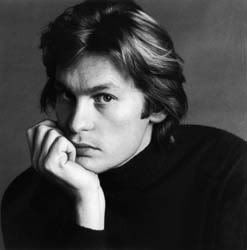
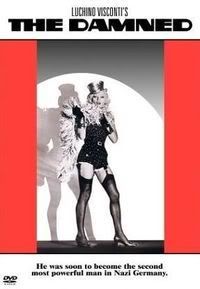
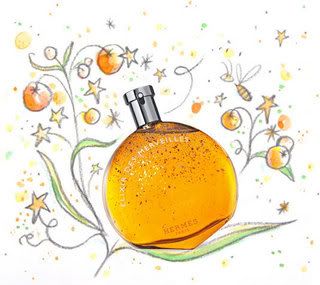
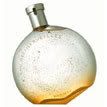

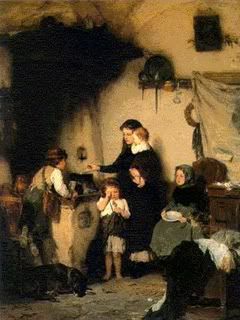


.jpg)



